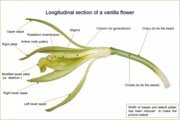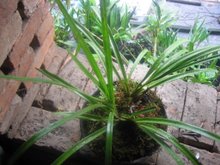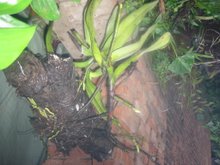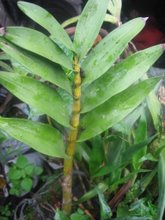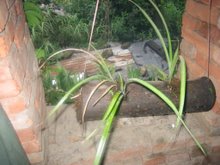
When watering your orchids, take care to avoid wetting the leaves.If water gets trapped in between the leaves, dry them quickly by using a piece of tissue or a cotton ball. After watering, do not allow residual or standing water to come in contact with the base of the orchid pot. Overwatering will result in yellow, damaged leaves. If your orchid's leaves turn yellow and show signs of rot, hold off on watering .
There are two sets of temperature to orchids as low as 60 degrees F at night, you should keep this between 75-85 degrees F in daylight hours.
Although orchids enjoy sunlight try keeping them shaded during the warmer parts of the day between 11.00am and 3.00pm.
Water is not as important a factor in how to take care of orchids as it might be with other flowers or plants. Unlike many other plants orchids grow as if they were on top of trees so very little water is required.
You only need to worry about re-potting an orchid roughly every two or three years. Unless they outgrow their pot or the mixture it's planted in becomes damaged,then you will need to re-pot before this.
When it comes to feeding an orchid they are very low maintenance. Since they thrive on sunlight and a minimum of water, you only need to add to this once a month with alternative products. A good source of nourishment is any kind of fertilizer that is high in nitrogen. The good thing with orchids is that they can be fed all year round, unlike many other plants. but
NNbbbbbbbbbbbbbote: I am not the orchid specilities but the lover of orchid.
There are two sets of temperature to orchids as low as 60 degrees F at night, you should keep this between 75-85 degrees F in daylight hours.
Although orchids enjoy sunlight try keeping them shaded during the warmer parts of the day between 11.00am and 3.00pm.
Water is not as important a factor in how to take care of orchids as it might be with other flowers or plants. Unlike many other plants orchids grow as if they were on top of trees so very little water is required.
You only need to worry about re-potting an orchid roughly every two or three years. Unless they outgrow their pot or the mixture it's planted in becomes damaged,then you will need to re-pot before this.
When it comes to feeding an orchid they are very low maintenance. Since they thrive on sunlight and a minimum of water, you only need to add to this once a month with alternative products. A good source of nourishment is any kind of fertilizer that is high in nitrogen. The good thing with orchids is that they can be fed all year round, unlike many other plants. but
NNbbbbbbbbbbbbbote: I am not the orchid specilities but the lover of orchid.


